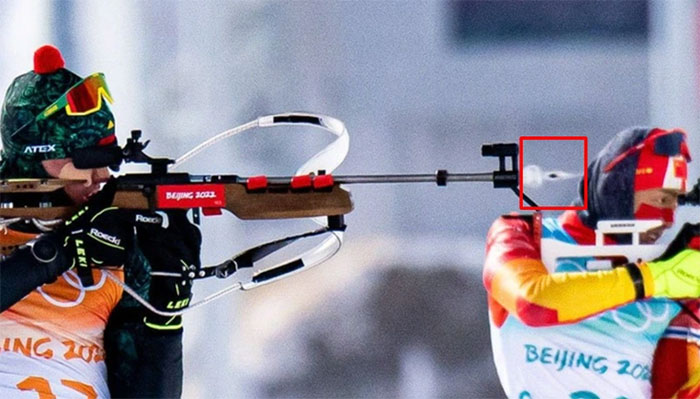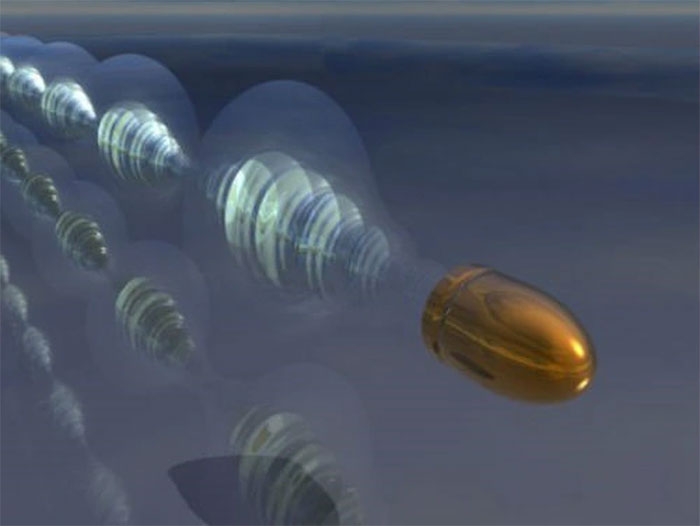Although bullets can reach a maximum speed of about 900 meters per second, photographers were able to “capture” the bullet at the moment it exited the gun barrel during the 2022 Winter Olympics.
On average, the speed of a bullet as it leaves the barrel is approximately 900 meters per second. At this speed, we can hardly see the bullet’s trajectory with the naked eye. However, with the help of modern technology, photographers have managed to take a “frozen” moment of the bullet in mid-air using specialized camera lenses.
At the Biathlon World Cup – part of the 2022 Winter Olympics, photographer Göran Strand demonstrated this with a photo taken using Nikon’s Z9 mirrorless camera.
Also in the same event, another photographer, Vytautas Dranginis, captured an image of the bullet after it exited the barrel with the Sony Alpha 1.
It is known that while Nikon’s Z9 can shoot at an incredible speed of 120 frames per second for 11-megapixel images, the flagship Sony Alpha 1 can capture 30 frames per second using an electronic shutter.

Bullet frozen in mid-air captured by Sony Alpha 1 at a shutter speed of 1/32000 seconds.

Photo taken by Nikon Z9.
As mentioned, on average, a bullet can reach a maximum speed of about 900 meters per second, nearly three times the speed of sound in air, which is approximately 344 meters per second. This speed is achieved due to the pressure generated when the trigger is pulled, causing the firing pin spring to strike the base of the bullet, initiating an explosive reaction that propels the projectile forward.
When exiting the barrel, the bullet spins rapidly due to the rifled design of the barrel. This helps the bullet fly straighter through the air and increases the likelihood of hitting the target.
According to studies, when fired, a bullet experiences various forces such as air resistance, rotational force, and gyroscopic force. Therefore, when traveling through the air, the bullet will not actually fly in a perfect straight line, but rather along a very complex trajectory.

The bullet fired from the barrel moves in a spiral pattern to increase accuracy and impact.
Despite their small size, bullets can cause significant damage due to their high speed, with momentum and dynamics playing a crucial role in their destructive capability. It is estimated that a bullet fired from a rifle that hits a target in 1/10 of a second can generate a force equivalent to that of a heavy truck at rest for 10 seconds.
However, the size and design of bullets also significantly affect their destructive power. Specifically, lighter bullets with high velocity penetrate deeper into various materials, while heavier bullets have less penetration but generate substantial energy upon impact, easily destroying the target.
Therefore, the .500 S&W Magnum is recognized as the most powerful commercially produced handgun cartridge in the world. It has a diameter of 12.7 mm, which is one and a half times larger than the AK submachine gun cartridge (7.85 mm), and its weight ranges significantly from 17.8g to 45g.


















































